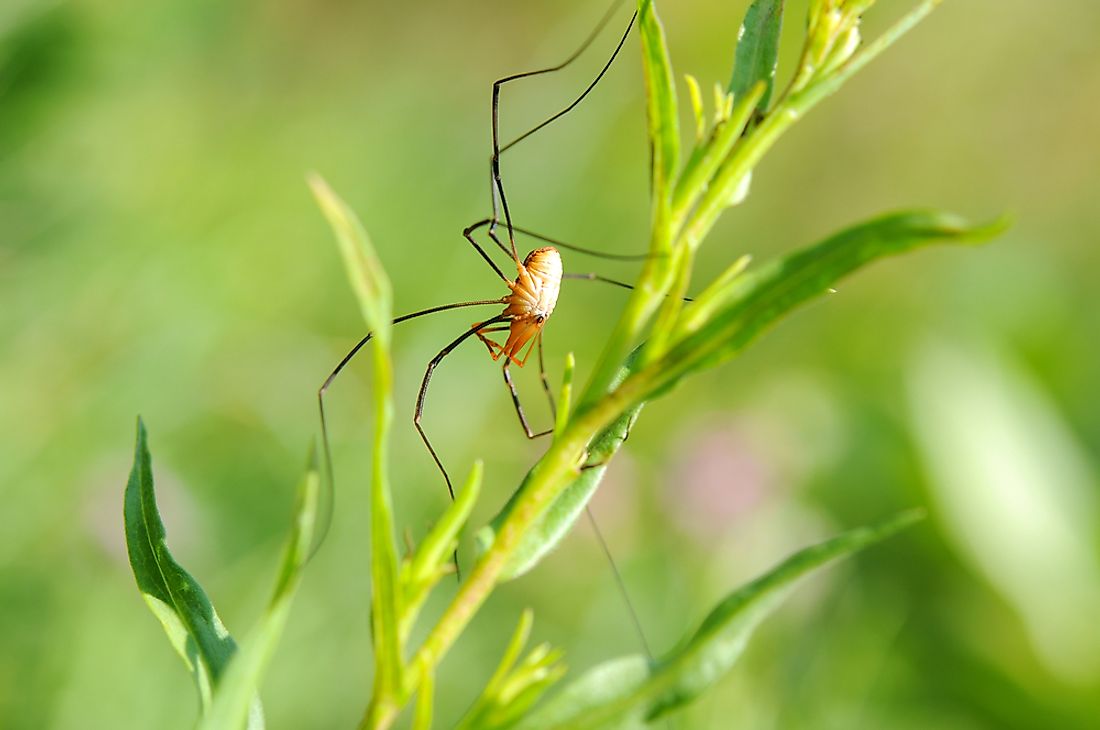Daddy Long Leg Facts: Animals of the World

Daddy longlegs or harvestmen are Opiliones, an order of arachnids comprising five suborders. Most people often mistake harvestmen for spiders, but although they are both arachnids, spiders belong to the order of Araneae. There are more than 6,650 classified species of Opiliones worldwide, but scientists believe there may be more than 10,000 extant species around the world. The five suborders of Opiliones include Eupnoi, Cyphophthhalmi, Dyspnoi, Tetrophthalmi, and Laniatores. Each of these sub-orders has some species on every continent except Antarctica. In some places, crane flies and cellar spiders are also called daddy longlegs due to their physical appearance which is similar to harvestmen.
Physical Description
Harvesters are known for their exceptionally long legs, but some species have short legs. They have two bodies just like other arachnids, comprising an anterior cephalothorax and a posterior abdomen. However, harvesters differ from spiders in physical appearance because they have a broad connection between the two tagmata which makes their bodies look like a single oval structure. The animals have four pairs of legs, with the second pair, which functions as feelers, being longer than the others. All the suborders apart from Cyphophthalmi have one pair of eyes located in the middle of their heads. Opiliones have a couple of spiracles through which air enters their trachea. Male harvesters have a penis, hence they mate by direct copulation.
Diet
Harvestmen feed using stomotheca, and they can swallow small chunks of solid food, unlike most arachnids. Opiliones are mostly omnivorous. Their main diet comprises small insects as well as all types of plant material and fungi. Some harvesters are scavengers, and they feed on bird dung, dead organisms, and fecal material. Most Opiliones hunt by ambushing their prey. Their second pair of legs, which they use as antennae, helps them in exploring their environments. Daddy long legs do not have a filtering mechanism or sucking stomach like most species of arachnids.
Behavior
Opiliones like living in moist and shady environments. Most species of harvesters are nocturnal, and they start foraging for food at twilight. The animals use two defense mechanisms to protect them from predators. When disturbed, they produce a foul-smelling milky liquid from their scent glands to keep predators at bay. Also, they can disconnect their limbs from their bodies when caught by a predator. The leg continues to twitch after it is detached to distract the predator and allow the harvestman to escape. Opiliones are not deadly as they do not possess venom glands and their mouths are too small and round to bite humans.
Reproduction
The majority of harvestmen reproduce sexually, though some species reproduce asexually. The mating season of Opiliones starts in late summer and extends into fall. Male and female harvesters copulate upon meeting. Shortly after mating, the female lays her eggs using an ovipositor, but some females may deposit the eggs several months later. The eggs take about 20 days to hatch. In some cases, however, they may take up to half a year, depending on conditions such as temperature. In some species, male harvesters assume the sole responsibility of guarding the eggs against predators and cleaning them until they hatch. The nymphs pass through four to eight stages after hatching before they reach maturity, depending on the species.







